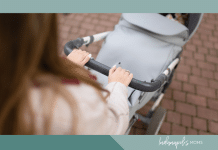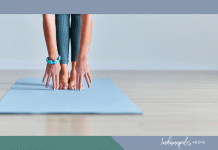Early in May, I wrote about surviving melanoma and how it affected me. Well, one way in which it changed me probably goes without saying – I am now ‘THAT WOMAN’ with sunscreen always in her purse. ‘THAT MOM’ at the park/pool/etc. who is reapplying sunscreen to her sweaty, slippery toddler and has enough to cover several families for the entire day. My 3.5 year old daughter doesn’t even mess around anymore when she sees the sunscreen. Arms out, legs spread, and eyes closed while her dad or I apply the lotion and she screams, “SAFETY FIRST, GUYS!”
Safety first is right, girlfriend. And while the dangers of the sun and artificial tanning are becoming more and more known, there is still a shocking amount of misinformation floating around the interwebs about sunscreen and skin cancers. So today, I’m going to pass along some sun safety tips and skin cancer statistics so that we all know how to better protect ourselves and our families from the damaging rays of the sun.
First off, let’s talk about skin cancer:
- More than 1 million cases of skin cancer are diagnosed in the United States every year. Of these 1 million cases, more than 137,000 cases are melanoma – the deadliest form of skin cancer.
- Melanoma affects people of every age and race, and one person dies nearly every hour from it. Having naturally dark skin does not protect you against the sun or ensure that you won’t develop skin cancer.
- Melanoma is the most common cancer in young adults ages 25-29 and the second most common cancer in people ages 15-29.
- Current estimates are that 1 in 5 Americans will develop skin cancer in their lifetime.
- The five-year survival rate for people whose melanoma is detected and treated before it spreads to the lymph nodes is 99 percent.
- Basal cell and squamous cell carcinomas are the two most common forms of skin cancer, but are easily treated if detected early.
- The use of tanning beds increases the risk of melanoma, especially in women younger than 45.
- Five or more sunburns during your lifetime doubles your risk of developing skin cancer
- Sun protection is especially important in children because sunburns in early life can lead to skin cancer in adulthood. In fact, 80% of lifetime sun damage occurs in childhood.
- Both UVA and UVB rays can cause skin cancer.
And now, some sunscreen facts and sun safety tips:
- SPF = Sun Protection Factor: The rating is based on using 1 ounce (or enough to fill a shot glass) of product per full body application. If your bottle of sunscreen is 4 ounces with an SPF of 30, you would use ¼ of the bottle to get the 30 SPF rating each time you use it all over.
- Water, humidity, and sweating decrease the effectiveness of sunscreen. REAPPLY, REAPPLY, REAPPLY! The current recommendation is to reapply sunscreen approximately every 2 hours or after swimming or heavy sweating.
- Using a higher SPF sunscreen helps increase your chances of getting enough sun protection. However, higher SPF sunscreens last the same amount of time as lower SPF sunscreens, so make sure you’re reapplying at least every 2 hours.
- Make sure your sunscreen is broad-spectrum – meaning that it protects against UVB and UVA rays.
- Apply the sunscreen to dry skin 15 minutes BEFORE going outdoors.
- Make sure your lips are protected! Skin cancer can form on the lips. Apply a lip balm or lipstick that contains sunscreen with an SPF of 30 or higher.
- Skin cancer can also form in the eyes – ocular melanoma is the most common primary eye tumor in adults. Around 2,000 new cases are diagnosed each year in the United States. Protect your eyes by wearing UV blocking sunglasses.
- The sun is most intense between 10 AM and 4 PM, so make sure you’re diligent about reapplying sunscreen and seeking shade between those hours.
- If your sunscreen is past the expiration date, throw it away and replace it. Sunscreens lose their effectiveness after their expiration date.
- Sunscreen should be used year-round – not just in the summer or on sunny days. Up to 80% of the sun’s harmful rays can penetrate your skin even on cloudy days.
- “Snow, sand, and water increase the need for sunscreen because they reflect the sun’s rays.” (aad.org)
- Sunscreen can and should be applied to infants 6 months and older. Babies under 6 months should avoid spending time exposed to the sun.
- “Are sunscreens safe? Using sunscreen, seeking shade and wearing protective clothing are all important behaviors to reduce your risk of skin cancer. Scientific evidence supports the benefits of using sunscreen to minimize short-term and long-term damage to the skin from the sun’s rays. Preventing skin cancer and sunburn outweigh any unproven concerns of toxicity or human health hazard from ingredients in sunscreens.”(aad.org)
Skin cancer statistics, sunscreen information and sun safety tips were found via www.melanoma.org, www.outrunthesun.org, www.skincancer.org, and www.aad.org. Please visit these sites for more in-depth information.
And remember: SAFETY FIRST, GUYS! Safety first.








